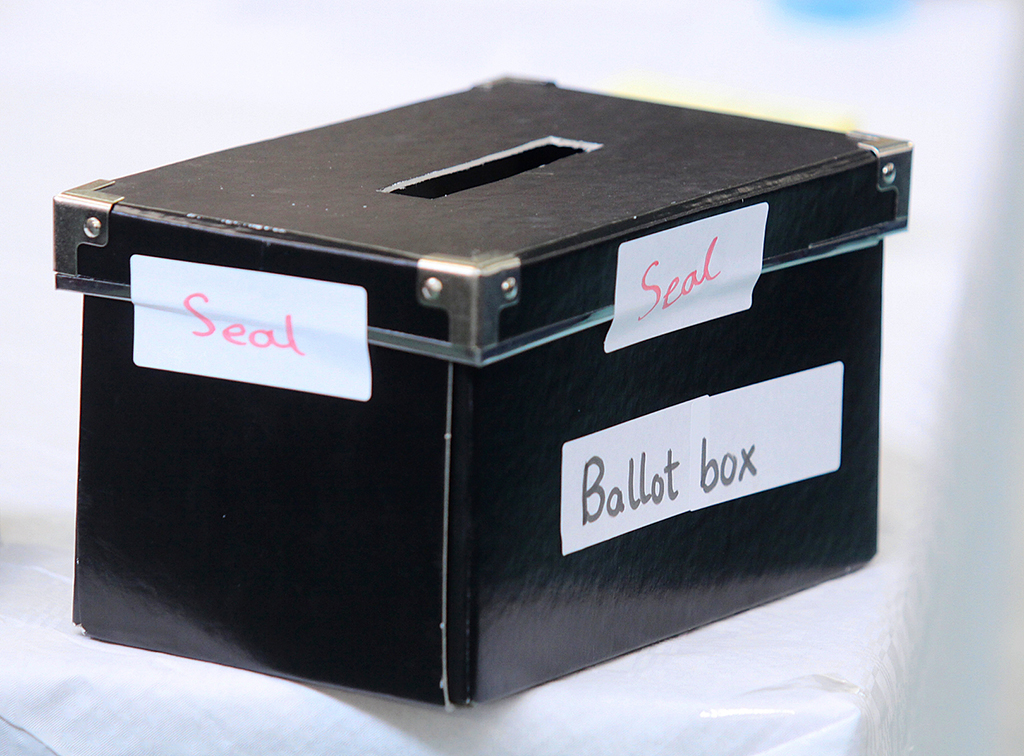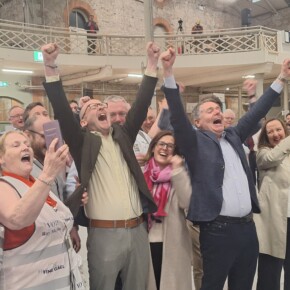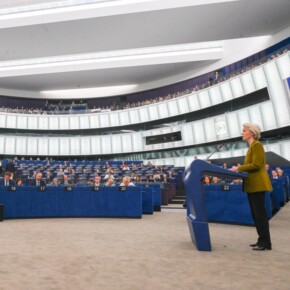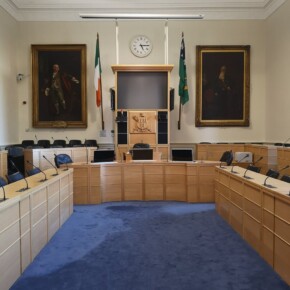No real surprises in store in Dublin North-West
Mike Finnerty 27 Nov 2024
Three-seaters, should in theory, be among the easiest things to predict in an election.
Of course, there is nothing easy about predicting this election.
Dublin North-West remains a three-seater for this general election, having lost a small chunk of land to Dublin West in 2023 constituency redraws, but by and large the constituency remains largely intact.
The big story in 2020 was Sinn Féin’s Dessie Ellis scoring an unheard of 44.4% of first preferences, with his preferences utterly warping the race.
2024 will be a test of just how much Dublin North-West values place trust in a politician over a specific party.
Ellis is running for re-election as the headline act, and Sinn Féin have slightly gambled by bring in a running mate for him, former councillor Cathleen Carney Boud.
Things would have to go brilliantly well for Sinn Féin to win two seats here, so instead Carney Boud could be perceived as getting a run out before facing the electorate as a lead candidate in the next general election.
In the nearby Dublin West, Emer Currie was Leo Varadkar’s running mate in 2020 and is now leading the charge for the party in that constituency.
Ballymun-Finglas and Artane-Whitehall are the two local electoral areas which make up Dublin North-West at a local level, and things didn’t go so well for Sinn Féin at a local level back in June.
Seven candidates could only produce three winners.
None of Sinn Féin’s winning candidates were poll-toppers either; in Artane-Whitehall, Independent Left candidate John Lyons topped the poll (who is running in the nearby Dublin Bay North), and in Ballymun-Finglas, it was Fianna Fáil’s Keith Connolly that came out on top.
For a party to get nearly 45% of the vote locally in 2020 and struggling to win locals not even five years later points to Sinn Féin’s traditional voter base in serious danger of upping sticks and going elsewhere.
Ellis is a dead cert to get re-elected; he could drop from 44% to 14% and still easily get re-elected but it’s the reduced majority that will make things interesting.
Fianna Fáil’s Paul McAuliffe can head into election day being reasonably confident of retaining his seat.
Fianna Fáil’s combined share of first preferences in Ballymun-Finglas which makes up the lions share of the constituency, came to 19% when split between two candidates, while Sinn Féin’s share of the vote, which split between three candidates, came to 20.9%.
Like Ellis, McAullife’s transfers will do a lot to shape the outcome of the race.
June’s local elections and subsequent polling analysis show very little appetite among Fianna Fáil voters to transfer to Sinn Féin or the Social Democrats, instead opting to go for their coalition colleagues Fine Gael.
As we will get to in a minute, the return of Noel Rock in the race could mean McAuliffe is the kingmaker in this particular election race.
McAullife has shown himself at odds with Fine Gael on certain issues; he has been critical of the current government for failing to keep DÉIS schools up to standard and has bemoaned the lack of powers afforded to local government in Ireland.
However, McAullife could be the recipient of one of the most sought-after votes in Irish politics; the “he fixed the local road” vote.
Since being elected to the Dáil in 2020, McAullife has appeared on over 280 official Dáil transcripts, 100 more appearances than Ellis during that same time period, substantially more than Noel Rock’s 59 appearances on the Dáil records between 2016 and 2020 and only lagging behind Róisín Shortall’s 392 Dáil transcript appearances since 2020.
Sometimes the Irish electorate simply like to reward the hardest workers or those who get things done; McAullife has certainly put in the groundwork in that regard.
The other big plot line heading into election day is news that veteran TD Róisín Shortall will not be running for re-election having represented the area since 1992.
Shortall’s remarkable career saw her win election five times as a Labour TD and a further two times as a Social Democrats TD.
November 29 will be a test of just how much of Shortall’s vote over the years was a personal one and how much was for the tenants of social democracy.
Shortall famously departed the Fine Gael-Labour government in 2012 over austerity measures and was one of the three founding members of the Social Democrats in 2015.
Labour’s reputation in working-class areas such as Ballymun-Finglas has never really recovered since their last stint in government and as such, the soft left/progressive vote is pretty much as lock for the Social Democrats in this part of Dublin.
While Blanchardstown-Mulhuddart saw Labour top the poll in June, the same couldn’t be said in Ballymun-Finglas; there, the party picked up just 3.1% of first preferences, and 3.3% in Artane-Whitehall.
Academic Rory Hearne, who was a general election candidate for People Before Profit on the Southside in 2007 and was a European candidate in Midlands-North-West in June has been tapped to succeed Shortall and has inherited a generous Social Democrat vote in the area.
In Ballymun-Finglas, the party placed fourth in the six-seater (Mary Callaghan held onto her seat) but the party went one better in Artane-Whitehall by securing two seats (Jesslyn Henry and Aisling Silke).
The Artane-Whitehall victory is significant as not only did both candidates outpoll all three Sinn Féin candidates, it was also the sight of Lyons’ poll-topping performance.
As we’ve written in recent weeks, Sinn Féin has opened up an unnecessary vacuum to its left since 2020 with a centrist pivot on certain issues and the Social Democrats are living proof of someone else coming in and carving out a niche.
John Nisbet, who indeed lined out for Labour in Artane-Whitehall in June, was a fairly late addition to the general election race (Hearne was picked back in July, as was People Before Profit’s Conor Reddy) and his presence on the paper can be attributed to Labour having to show its face.
In 2020, the party received 2.6% of first preferences; in 2011, the last election Shortall ran as a Labour TD, she received 28.6%.
Labour aren’t expected to be competitive, but they are only relevant here as they might provide a boost for Noel Rock of all candidates.
Rock lost his seat in 2020 (in his own words, the 2018 constituency redraws saw him lose a chunk of votes “at the swipe of a pen”,) and was one of Fine Gael’s high-profile losses on that day.
An unsuccessful Seanad bid in 2020 indicated that not even the gilded cage that was the Seanad electorate wanted anything to do with him, but four years is a long time in politics.
How Rock meshes with the Simon Harris brand of “new energy” remains to be seen; he was a TD between 2016 and 2020, a period that Fine Gael are trying to distance themselves from.
Last time, Rock lost his seat after Conor Reddy overtook him on transfers; if the Fine Gael campaign carries on at a languid pace, the same fate may befall Rock again.
Fine Gael failed to win a seat in Ballymun-Finglas in June (in fact, their share of the vote went from 5.7% in 2019 to 3.6% in the locals just gone), but were much more successful in Artane-Whtehall with the second place finish of Declan Flanagan.
The sub-plot to watch is the rematch between Conor Reddy and Noel Rock
Back in 2020, Reddy received a wave of transfers from Dessie Ellis, which was enough to kill any momentum Rock had built up at that stage of the race and actually managed to finish above the sitting Fine Gael TD despite not holding any political office of his own.
Reddy has the advantage of holding elected office over Rock now (Reddy was elected in Ballymun-Finglas in June), and despite the three-seater nature of the seat, Reddy is in a stronger position than he was in 2020.
In the event the Hearne vote is weaker than expected, the battle for the final seat would be between Reddy and Rock.
Reddy won the third seat in Ballymun-Finglas in June, and while the party was less successful in Artane-Whitehall with 1.8%, victories for John Lyons and two Social Democrats candidates point to at the very least, some sympathy for left-wing politics in that part of Dublin.
Rock has the backing of former Taoiseach Leo Varadkar in his bid for a Dáil return (saying that Rock would be the man to expand the Luas out to Finglas), but housing appears to be the big issue on voters minds as opposed to infrastructure.
In terms of promising to deliver housing, People Before Profit, Social Democrats and Sinn Féin all enjoy the upper hand on the topic compared to Fine Gael.
Rock was a product of the 2016-2020 government which introduced a supply-side, nearly Liz Truss approach to housing, which was a bit like the scene in Jurassic Park when the power gets cut to the electric fence.
While the “new energy” Fine Gael has promised is more retired footballer in a charity match than the Duracell bunny, Rock being so closely associated with the Fine Gael government of five years ago might not do him any favours.











